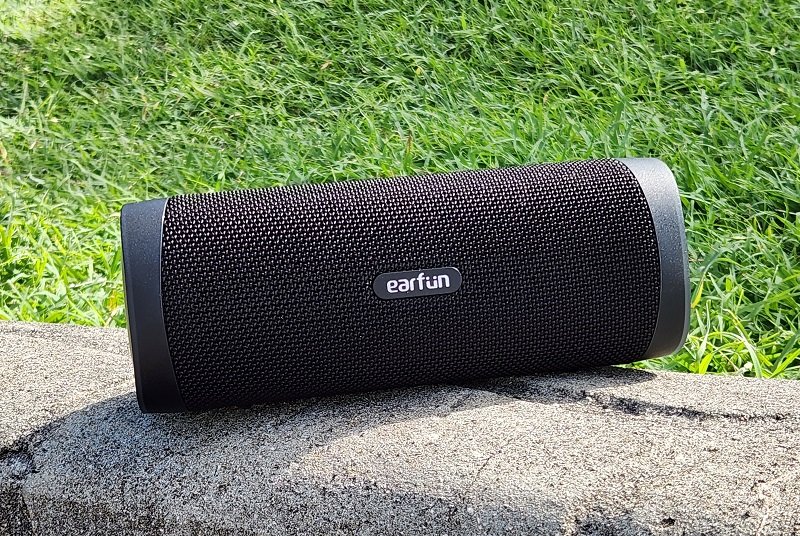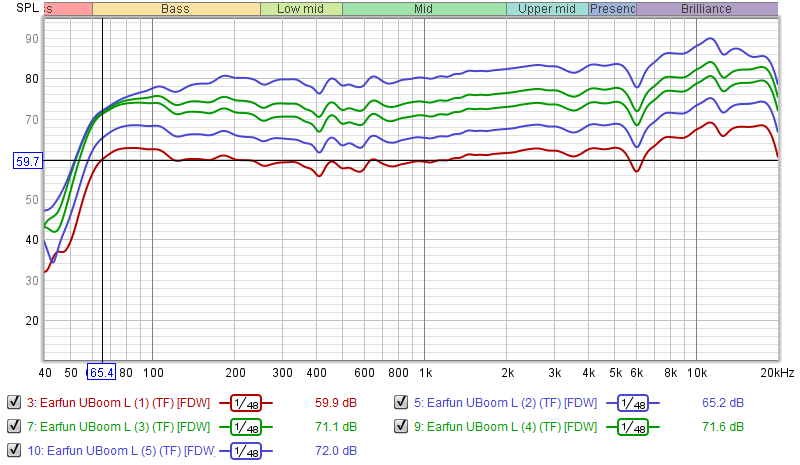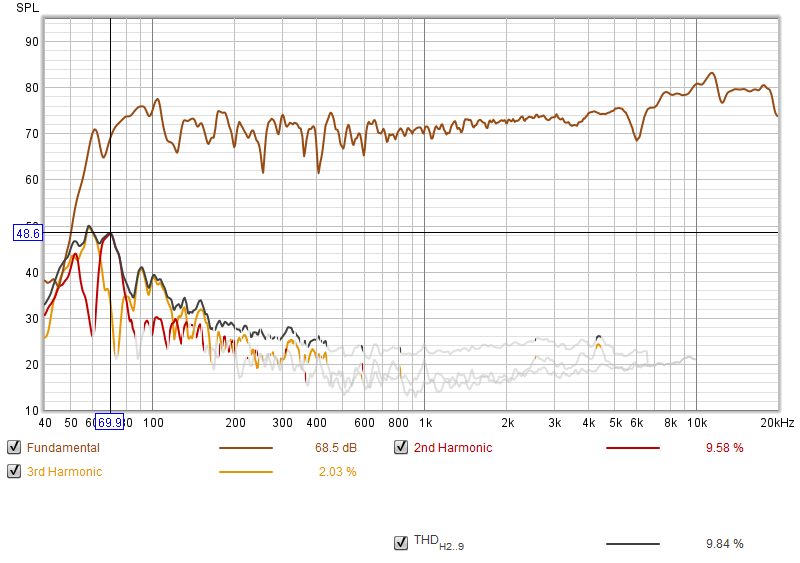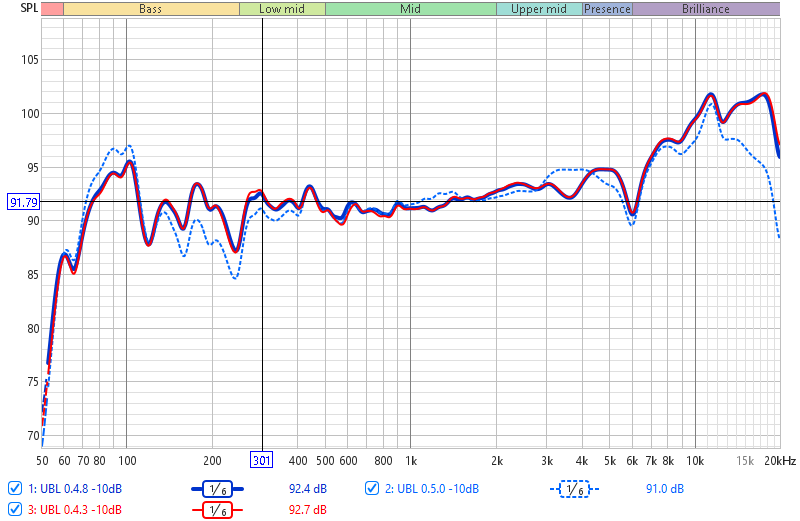Bluetooth Speakers - the Earfun UBoom L
15 September 2024

Introduction:
The Earfun
UBoom L is a bluetooth speaker that I purchased from Amazon during
July 2023. I was looking for a bluetooth speaker that I could
use with my PC while watching Netflix and Youtube videos, and my
existing bluetooth speakers delayed the sound so much that it was
quite noticeable. I chose the Earfun UBoom L as it has a
"video" feature that supposedly significanly reduces that processing
delay. It also had the added advantage that it was IP67 rated
and reviews of its performance on the Internet were generally
positive.
Measurements:
My measurements
of the Earfun UBoom L's performance back up the generally positive reviews
that it's received. For example, pictured below is the
frequency response of the Earfun UBoom L with the 0.48 firmware at
different output levels (yes, I downgraded the firmware from the
v0.50 that was supplied with my own, because 0.50 made it sound too
bass-heavy). I
used Earfun UBoom L's AUX-IN input for the test signal, which was a
simple 20 Hz to 20 kHs sine-sweep generated by Room EQ Wizard's
measurement routine. Measurements were performed using a calibrated
UMM6 USB microphone. The graph shows the frequency response measured
at approx 0.75M, with a blend of the close-miked response of the
drivers and the passive radiators applied below 400 Hz.

Apart from a hump in the low bass response, and some boosted highs, the frequency response is quite flat and the distortion level is fairly low. Response drops like a rock below 65 Hz, but this is only to be expected from a speaker that size. The slightly boosted highs are not unpleasant and they drop a bit off-axis.
Pictured below is the distortion curves for the Earfun UBoom L at the SPL level near where the bass was being rolled back. The UBoom L's processing does a fairly decent job of keeping distortion in check, but it's still somewhat noticeable with sine sweeps.

As can be seen from the graph, measured distortion remained very low until the bass region, where the additional excursion requirements start taking their tool, with the THD peaking at 10% at 70 Hz, where the bass response starts to roll off. While 10% sounds like a lot, most people have enough trouble noticing this level of distortion in pure tones at bass frequencies, and definitely won't notice it with music.
Conclusions:
Overall I like
the Earfun UBoom L. It does nothing objectionable and it works
well for the purpose that I bought it.
Other Matters:
There's been
some discussion online that there's an audible difference between
firmware version 0.4.8 and 0.4.3, with the latter being the
"recommended" version because it sounds better. My own
measurements of the speaker's in-room response measured at 18 inches
from the speaker, displayed in the graph below, show that the response at the same output level for
both versions is essentially identical. As version 0.4.8 fixes some
bugs that are present in version 0.4.3, my suggestion would be to
install version 0.4.8.
In comparison, when firmware version 0.5.0 is loaded, the overall response curve at the same output level is worse. As illustrated by the dotted line below, the low bass is boosted (which causes audible distortion at higher volume levels), the midbass is reduced and the high frequencies are cut as well. The result is a noticeably worse-sounding speaker.

Links:
Videos:
Brian Steele
15 September 2024